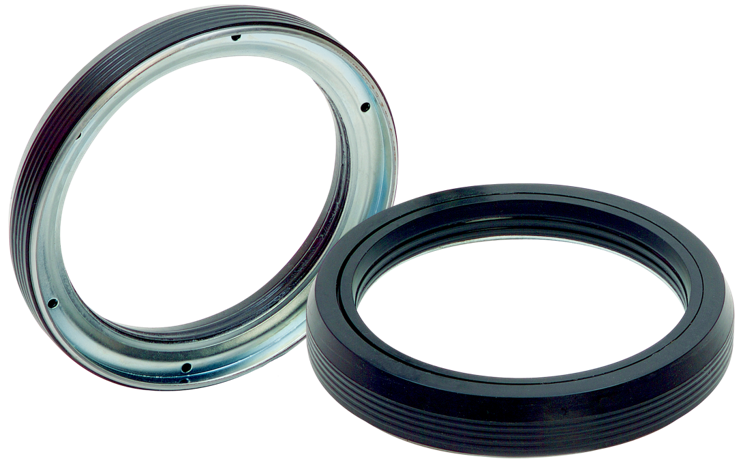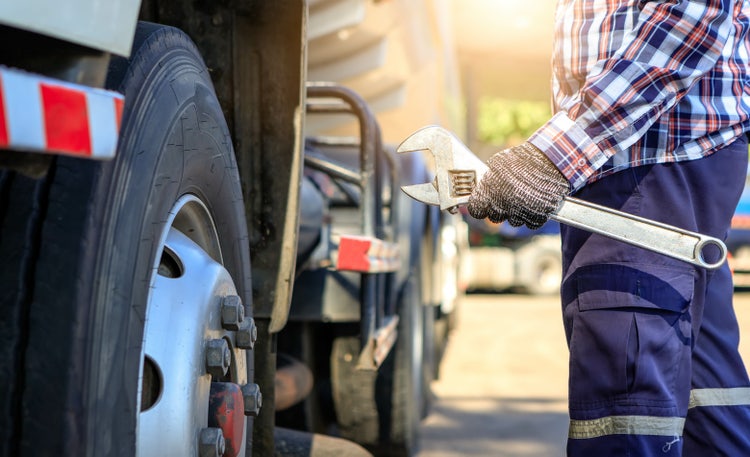Many of us have witnessed firsthand the havoc that can result from wheel seal failures. These unassuming components play a pivotal role in the overall health and safety of your truck, yet they often go overlooked until it's too late. In fact, the Federal Motor Carrier Safety Administration cites this issue as one of the most common maintenance-related violations.
In this post, we'll dive into the wheel-end world of wheel seals (also called hub seals and bearing seals) to explore why they fail, and how you can prevent failures from occurring.

“The Deliberate Weakest Link”
Wheel seals are engineered to be the weakest link in the wheel-end assembly for a good reason. This design principle ensures that the seal fails before more critical components do, providing an early warning system of sorts for truck owners. The idea is to create an opportunity to address minor issues before they escalate into catastrophic failures. However, the simplicity of this concept belies the complexity of causes behind seal failures.
The Top Five Causes of Wheel Seal Leaks
In the long list of possible wheel seal issues, the main culprits boil down to five primary categories:
1. Improper Installation: The leading cause of wheel seal failures. Whether due to using incorrect tools, excessive force, or improper techniques, a seal that's not seated correctly can fail prematurely. It's a delicate balance between ensuring a snug fit and not damaging the seal during installation.
2. Incorrect Bearing Adjustment: Wheel-end bearings require precise adjustment. With the variety of systems and specifications across different truck models and years, what worked for one might not be suitable for another. An improperly adjusted bearing can exert undue stress on the seal, leading to leaks.
3. Damaged Components: A compromised hub bore or shoulder, among other critical wheel-end components, can negatively impact the seal's integrity. Regular inspections for wear and damage are essential to prevent seal failures.
4. Dirt and Debris: Especially prevalent in trucks that frequently endure off-road conditions. Dirt, debris, and other contaminants can breach the seal, compromising its effectiveness. Proper cleaning and maintenance are key to to avoiding this issue.
5. Ventilation Issues: A clogged hub cap vent hole or drive vent impedes the proper breathing of the wheel-end system. Without adequate ventilation, pressure builds up, putting additional strain on the seal, which can lead to failure.
Maintenance Checks to Prevent Seal Failures
To mitigate these risks, a few standard maintenance practices can mean the difference between dependable performance and costly repairs:
- Bearing Fluid Checks: Regularly inspecting the oil or grease in the bearing can reveal early signs of wear or contamination. Metal particles, a burnt smell, or incorrect fluid levels are red flags that require immediate attention.
- Ventilation Clearance: Ensuring that the hub cap vent isn't obstructed is a quick but critical task. A simple tool like a paper clip can clear away debris, but take care not to damage the vent in the process.
- Regular Adjustments and Inspections: Bearing adjustments should be part of your regular PM schedule. Additionally, any trigger, like an ABS light warning, should prompt a thorough check of the wheel-end system for overheating or looseness.
Seal the Deal to Stay Out of Trouble

A leaky seal is often the first sign of trouble in the wheel-end assembly. Ignoring these early warning signs can lead to severe outcomes, such as wheel detachment or fire, resulting in significant danger and expense. A diligent inspection program, along with an understanding of the common causes of seal failures, can greatly reduce the risk of trouble down the road.
Remember, the health of your wheel seals is a direct reflection of the overall condition of your truck's wheel-end system. By addressing these issues proactively, you’re preserving the safety of your vehicle, your cargo, and yourself!
Road Choice offers a complete inventory of high-quality, easy-to-install wheel seals. For more information or to schedule a service appointment, call the experts at your nearest Road Choice retailer. You can also order wheel seals online, anytime through PartsASIST™,delivered directly to your doorstep or available will-call at parts pickup.